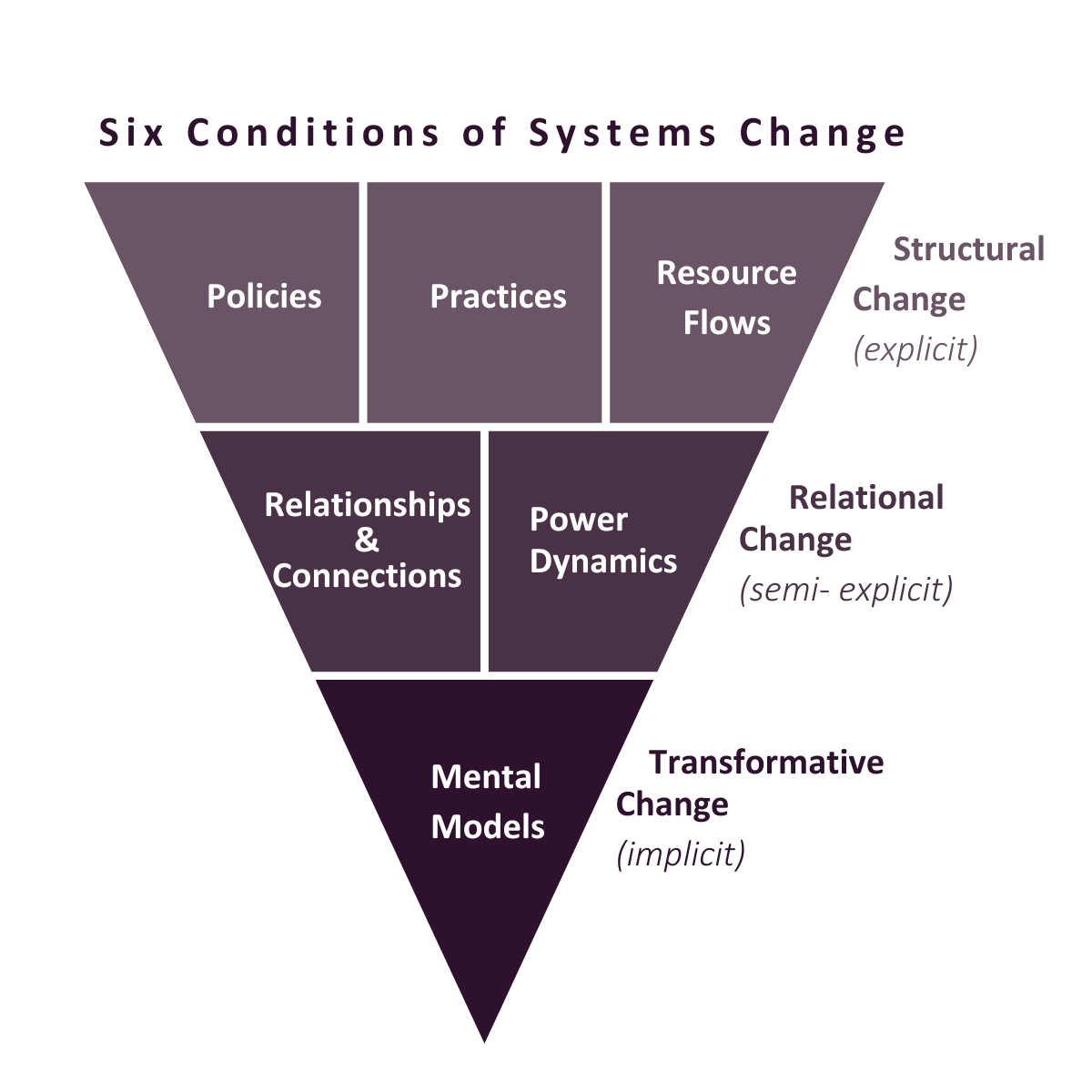Introducing Systems Change
In this article, Deputy Director George Makapatama explores how ConCOVE utilises systems change and its fundamentals to approach our projects.
At ConCOVE, we believe the construction and infrastructure sector should be inclusive, sustainable, and productive, with clear career pathways supported by a future-focused vocational education system. But we recognise that achieving this vision requires more than incremental changes or isolated interventions. We need a fundamental shift in the conditions that hold the problems in place, and that’s where ‘Systems Change’ comes in.
Systems change is defined as ‘shifting the conditions holding the problem in place’
Kania, Kramer and Senge, 2018
Systems change involves addressing Six Conditions: policies, practices, resource flows, relationships and connections, power dynamics, and mental models. By shifting these underlying interconnected conditions, we can create meaningful and lasting change that promotes equity, sustainability, and productivity in the construction and infrastructure sector.

Systems change is a critical approach to social change that aims to shift the root causes of complex problems by transforming the underlying systems and structures that create and sustain them. This approach recognises that our problems are not isolated but interconnected and embedded within larger social, economic, and political systems. Therefore, we must address the underlying systemic conditions that hold the problem in place to create meaningful and lasting change.
At ConCOVE, we understand the Six Conditions and their interconnected nature needed to shift to achieve our Mission and Vision: policies, practices, resource flows, relationships and connections, power dynamics and mental models.
Policies include the formal and informal rules, regulations, and priorities that shape how the sector operates.
Practices are the organisational and practitioner activities targeted to addressing and making progress.
Resource flows refer to how money, people, knowledge, and information are allocated and distributed.
These three conditions sitting on top of the inverted triangle are referred to as ‘Structural Change’. They are explicit, meaning they are tangible and observable factors that we can all see.
Relationships and connections are the quality of connections and communication occurring between actors.
Power dynamic refers to individuals and organisations holding decision-making power, authority, and influence (both formal and informal).
These two conditions are referred to as ‘Relational Change’. They are semi-explicit, meaning that while we can sometimes identify the people and power structures within the system, it is not always clear who holds influence or how decisions are being made. Addressing these conditions requires a deep understanding of the social and political dynamics at play within the sector and a commitment to promoting equity and inclusion.
Mental models are deeply held beliefs and assumptions that influence one’s actions.
This condition is referred to as ‘Transformative Change’ and is considered the most transformative, as shifting people’s mental models can lead to significant changes in behaviour and outcomes.
To achieve systems change, we must not only address policies, practices, and resource flows but also challenge and transform the underlying mental models that shape our thinking and actions. By building relationships and reimagining our sector together, we have the greatest chance of success in shifting mental models and creating lasting change that promotes equity, sustainability, and productivity in the construction and infrastructure sector.
To achieve systems change, we need to work together to shift these conditions through collaborative and coordinated efforts. This means bringing together diverse stakeholders, including industry leaders, Iwi, akonga, learners, VET, policymakers, NZQA, WDCs, and community, to identify and address root causes of our problems. We must challenge the status quo, examine the underlying assumptions that drive the current practices, and explore alternative and emerging models prioritising equity, sustainability and productivity.